NOTE ; THIS ESSAY IS FOR PERSONAL USE. LIKE ANY OF MY OTHER WORK, THIS HAS NOT BEEN PEER REVIEWED AND IS NOT A TICKET OUT OF A HOMEWORK ASSIGNMENT. Please let me personally know through my contact page if you are using this as a class reference, also.
This is an essay from my design studies class titled Thingspeak.
I recieved a HD for this essay.
The Significance of
Rube Goldberg Machines
Rube Goldberg was an author, engineer and cartoonist from San Francisco. He began drawing as a child and was enthralled simply by the scent of ink.
He was, however, discouraged from illustration by his father, and so studied an engineering degree. Soon after quitting his first job as an engineer, he started an internship at a newsroom, and eventually found himself illustrating the sports section of the paper. As his popularity grew, he started his own column of illustrations (Mousetrap Contraptions, History of Rube Goldberg, paragraphs 1-2).
These illustrations depicted his most famous work – his inventions – now known as Rube Goldberg Machines. According to his official website (Rube Goldberg, Biography, paragraph 6), Rube never made these machines, however, it is commonly known that his work has and continues to inspire many inside and outside of the inventing world, locally and globally, today.
The Definition, Purpose and Historical context of Rube Goldberg Machines:
To begin literally, a Rube Goldberg Machine (as defined by the New Webster and Merriam-Webster dictionaries, respectively) is “a comically involved, complicated invention, laboriously contrived…” to “[accomplish] by complex means what seemingly could be done simply”. Simply put, a Rube Goldberg Machine is one that follows the complete opposite philosophy of modern design, for the sake of a combination humour and science.
![rubegoldberg_photo_gal_4157_photo_947882856_lr[1]](http://wordsaboutsomething.com/wp-content/uploads/2013/03/rubegoldberg_photo_gal_4157_photo_947882856_lr1-300x79.jpg)
2: Weekly Invention – “How to Put Holes in Doughnuts”, c1940, Copyright belongs to Rube Goldberg Incorporated
More philosophically speaking, the Rube Goldberg Machine represents the concept of working around a problem. To add, the machines celebrate finding new ways of solving problems while disregarding the often constraining paradigm of literal thinking and the modern demand of instantaneous satisfaction.
Historically, machinery had been used to make jobs easier – beginning with the Hero of Alexandria during the primal dawn of modern engineering in Ancient Greece, and moved to the great observations of Da Vinci and research of Newton. As time progressed to the 18th Century and the industrial revolution, and on to turn of the 19th to 20th Century, when Goldberg was alive, there was a great significance placed on the power and efficiency of new machines.
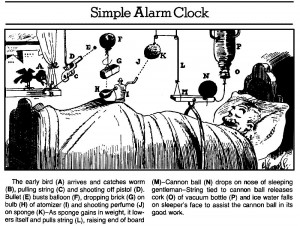
Figure 3: Household Appliances – “Simple Alarm Clock”, c1930, Copyright belongs to Rube Goldberg Incorporated
Due to the resources pooled in America (and worldwide) after the First World War, a brief period of social extravagance in the Twenties, and then the Great Depression in 1929, there was a clear utilitarian value now held within American Society – machines were better than any other object, and objects were made obsolete where possible. This is clearly represented in the Bauhaus movement, as popular now as it was in its historical peak.
As a point of political and social satire, Goldberg drew inspiration from the world around him and imagined and designed the most convoluted, yet scientifically sound contraptions in reaction. This was his personal criticism and mockery of the new philosophy of “Form Follows Function” (Louis Sullivan, 1896).
The Influence of Rube Goldberg Machines:
Rube Goldberg Machines in the Academic World:
Since their original appearance, Rube Goldberg Machines have been analysed for other possible applications. When most people look upon these inventions, they see a mockery of a system; often, without proper insight and consideration, the ingenuity of such designs is overlooked. It’s clear to see that when a politician is referred to having put forward a “Goldberg-esque” concept, it is a negative reflection on the system proposed. On the other hand, there are some unforseen benefits within the essence of this kind of system.
An area that would not usually directly benefit from such a design is medicine and mental health. However, now with modern understandings of biology and psychology, there is a clear path to view how the two interact. The Goldberg system is figuratively applied in two different ways in modern psychology. The first is the more classic chain reaction form of psychologically analysing and attending to a problem. By breaking issues down into small, often seemingly unnecessary steps, the sufferer is able to see a solution getting closer. This is a branch of what is called “Cognitive Problem Solving”, and often follows the Russian problem-solving principles of TRIZ and ARIZ (CTQ Media, What is Triz?, 2006).
The second relevant application is a psychological breakthrough in the treatment of Schizophrenia via an antipsychotic drug that works on a similar principal to that of the Rube Goldberg Machines. By ‘[suppressing] something that in turn supresses the bad effects of schizophrenia’ (States News Service, ‘Building a Better Antipsychotic Drug…’ 2011), the newly-developed medication is able to implement a chain-reaction style solution.
Rube Goldberg in Social Context:
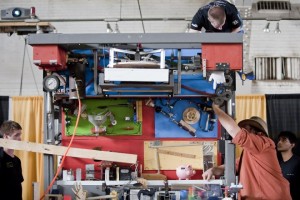
Figure 5: Purdue State team work on their 300 step balloon popper, 2010, Purdue University/Andrew Hancock
Beginning in 1987, Purdue State University (USA) has held annual local and national contests in memoriam of the late Rube Goldberg, (Purdue University, 2012). The competition, aimed at engineering students, has gained international recognition and continues to produce amazing, ingenious and overall memorable applicants with structures and systems that prove that Goldberg’s legacy lives on. This kind of engagement gives particular fraternities, societies and organisations to make a name for themselves, while still keeping in the light-hearted spirit of Goldberg himself. The criterion of the competitions includes number of steps (the higher the better), quantity of malfunctions and amount of human intervention.
Some notable applicants have been Ferris State University, (Industrial Engineer, ‘Extravagantly Inefficient’, 2007), who made a contraption that took three hundred and forty-five steps to squeeze orange juice, beating the current record of the time – which was one hundred and twenty-five. They are cited to have spent over 3000 hours working on the machine.
Another exceptional entry is a 2010 entry to the competition: Purdue State University. After fourteen people put in 5000 hours of work into making a three hundred step machine to simply inflate and then pop a balloon. In the 25th year of the competition running, it now also holds the Guinness World Record for the largest Rube Goldberg Machine ever invented (PC Magazine Online, Check Out This Awesome Rube Goldberg Machine, 2012).
The Northern Illinois STEM Outreach Organisation has also created a similar type of competition; a part of its annual ‘STEMfest’ event. The competition is aimed to encourage children to experience and enjoy science (NIU STEMfest, 2011). However, due to the target audience, rather than a full-scale functioning model, participants just submit their drawings of their own Goldberg Machines.
Rube Goldberg Machines in Design and Art Movements:
Although newspaper cartoons are far removed from the refined art world, the preposition of uniting the worlds of art and science (sculpture and physics, respectively) did not fall flat on professional artists and art-thinkers. During Goldberg’s life (around 1952), an offshoot of Dada, known as ‘Metamechanics’ began to grow.
Founded by Jean Tinguely, the movement encompassed artists who used science and technology within their sculptures, often in chain reaction as a Rube Goldberg Machine would. Combining Avant-Garde art with the mix, Tinguely’s sculptured often differed from traditional Goldberg machines in how they would eventuate to no final outcome at all. In the spirit of Dada, he made pointless gadgets that served no purpose beyond aesthetic philosophy.
A modern day example of this kind of art is the work of Theo Jansen. Having studied physics and art, his sculptures not only work with wind, but move and ‘live’ with organic ‘habitat’. His works are engineered so that they may ‘walk’ along beaches, across deserts, and through fields – and even exist on their own. After gaining popularity online, he has produced a handful of videos, (TED Talks, 2007) which truly pronounce his vision of and for his ‘Strandbeests’.
Rube Goldberg Machines in Popular Culture
Traditional Gaming and Video Gaming:
The Rube Goldberg machine is a true example of human interaction with objects on a superficial level – the human constructs and sets off the machine, but in the end, it is the forces of real-world physics that act on the components of the machine. Reflecting on this, Goldberg’s work has constructed a lot of primary source materials and concepts that have influenced both the façade and interaction philosophy used in modern day gaming.
The first known example of Rube Goldberg Machines in a marketed form of gaming is the popular family board game, ‘Mousetrap’. The first variation of the game was made in 1963, when Goldberg was still alive, however according to ‘Timeless Toys’ (Tim Walsh, 2007, pages 156-7), the designer of the Mousetrap game – Marvin Glass – refused to pay any royalties to Goldberg, despite being clearly influenced by his previously published comic strip by the same name. This original version is still sold in stores today, and there have also been several online re-interpretations of the game, hosted on various websites. It is made for played by two to four people, and plays on emotions of suspense and accomplishment. In this game, the avatars of the players are mouse shaped counters, and the aim is to make your way through the Goldberg-esque contraption, rolling dice for step count and collecting cheese tokens, before a marble is released and sets off the machine, trapping the mice in a cage. The win is given to the player with the highest cheese count.
Many other interpretations and variations of Rube Goldberg Machines have appeared consecutively in the world of gaming, especially in video gaming. This high-density and frequent representation of Goldberg’s machines in video games can be partially attributed to the machines not only having puzzle-solving and interaction related attributes, but by taking away the physical component of literally creating the machine, the player can experience the trial-and-error of re-aligning and re-designing any faults, as well as the magic of inventing, without having to use any supplies or serious physical effort. Games like ‘The Incredible Machine’ (1993, Sierra), ‘Crazy Machines’ (2008, FAKT), and ‘Incredibots’ (2009, Grubby Games) are all PC games that have an premise entirely based around constructing machines that resemble and pay tribute to not only Goldberg and his designs, but the aforementioned ideals of gameplay. These games have engaged, educated and encouraged many individuals to think laterally and experiment.
<figures 11, 12, 13 to be re-sourced, currently missing>
The puzzle aspects of such a contraption are also incorporated seamlessly into other videogames, in such a way that the game does not revolve simply just around the creation and execution of these machines. Examples of this are seen in the ‘Little Big Planet’ series (2009, Sony), in which the player works through a series of platformer puzzles, including (but not limited to) Goldberg inspired puzzles. Another recent example of this is a fairly subtle reference made in ‘Fallout 3’ (2008, Bethesda Game Studios), where a store references Goldberg and contains a relevant topical challenge within it. The puzzle features cattle skulls, cereal boxes, a baseball pitching machine, gas cylinders and a bouquet of grenades (RGM, 2012, Remato).
Television
Not only have interactive media formats taken Goldberg’s creations into account, but so has the outlets of film and television. It is not surprising that many well-known cartoons and children’s programming, such as ‘Wallace and Gromit’ (c1987, Aardman Animations) and ‘Sesame Street’ (c1969, Children’s Television Workshop) feature Goldberg devices, as the idea of being able to create a machine using everyday objects is a concept that appeals to the imagination of young children.
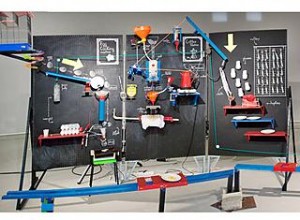
Figure 14: ‘The Breakfast Machine’ close-up shot, ‘Wallace and Gromit’ c1987, Copyright Aardman Animations
Film
To add, there are several films that also reference Goldberg’s devices, including the cult films ‘Hatari’ (1962, Howard Hawks), ‘Back to The Future’ (1985, Robert Zemeckis) and the ‘Final Destination’ film series (2000, James Wong). The first to use Rube Goldberg Machines in more experimental cinema were the Swiss directors Peter Fischli and David Weiss, in their 1987 avant-garde art film, ‘Der Lauf Der Dinge’ (The Way Things Go). The 30 minute long film – consisting of a chain of events triggered by tires, trash bags, and even fires and chemical reactions – has won awards globally.
Advertisements
Accompanying the cult film, advertisements using the spectacle of the cause-and-effect system to endorse particular products have also gone viral. This includes a rare 1997 Coca-Cola advertisement and the ever-popular Honda Accord advertisement (‘Cog’, 2003, Honda). The acclaimed ad went viral soon after airing, and was legally challenged by the directors of ‘Der Lauf Der Dinge’ (mentioned earlier) in respect to protection of intelligent property rights (Guardian, ‘Acclaimed Honda ad in copycat row’, 2003). The battle between artists and major corporations over intelligent property is an ongoing issue, and presents the question of where the fine line rests between owning a product and owning an idea.
Music Videos
Other ways of using video footage, such as music videos, have also taken advantage of the viewer-engagement created by the machines. Prime examples of this phenomena are The Bravery’s ‘An Honest Mistake’ (2004, Island Records), which uses monochromatic greyscale and highlights of only red and yellow to pull the viewer in even more. A similar use of colour is also shown in OK Go’s film clip of ‘This Too Shall Pass’ (2010, Capitol Records). The band is renowned for their creative, viral and often low budget music videos. Because of this, they have received critical acclaim for several of their music videos, including ‘This Too Shall Pass’, and the featured Rube Goldberg Machine (‘Inside the OK Go Rube Goldberg Video’, 2010, PC Magazine Online).
My Personal Fascination:
Growing up, I was often strongly influenced by many of the above mentioned associated products and objects, and so, I can say that my personal fascination with Rube Goldberg Machines has been a long, entertaining and educational one. I remember being under ten, and begging my brother to get out the ‘Mousetrap’ board game – I also remember him being the first person to tell me all about ‘The Incredible Machine’ game when his friends were playing it. As he was always receiving scientific and cognitive thinking ‘educational toys’ (such as Lego and electronic soundboards), and I was left with dolls and drawing tools, this way of technologically expanding my problem solving skills at a young age was essential to not only understanding the physical world and of physics itself, but also to triggering my obsession and long-lasting love of objects and physically engineered systems. It would be safe to say that this, coupled with my exposure to the above mentioned pop-culture references, is what truly set my life-long goal to seamlessly fuse the worlds of design and science in motion.
I grew up in the inner-northern suburbs of Melbourne, and still live around that area. Occasionally, when I was a child, for a treat, my mother would take me to Northland Shopping centre, and there, would be the perpetual motion machine, on the second floor, beside the cinema. Inside of a glass box was an installation piece known as ‘Global Circus’ by an artist named George Rhoads. It’s been there for as long as I remember – it’s been running since 1985, and now, whenever I’m there, I still stare at it with all the wonder of six year old, except now with mechanical understanding and more philosophical contemplation.
I remember trying to emulate what the billiard balls in this contraption did, on my Nonno’s billiard table, no less. I ended up slamming them across the table and into my fingers several times, dropping them on the tiles (or my toes, if I was feeling particularly clumsy). Sometimes I’d accidentally let them roll outside and having to fetch them while trying not to tread on the tomatoes growing beside the lemon tree (that is still there today). Needless to say, the six year old version of me wasn’t able to engineer something that worked quite so smoothly.
Later in my life, in about year ten, I went through a personal crisis – I didn’t know what I wanted to do with my life, and for some indefinable reason, I thought I needed to. I looked into engineering, but my maths marks waned between top of the class and not passing at all. I looked at fashion, interior and other decorative designs as well as art, and felt like they were missing something – a feel of purpose and meaning beyond the self. It was around that time that I also discovered the work of Theo Jansen on the internet. I devoured his TED Talks. I researched him to no end. It was also at that point that I decided what I wanted to do with my life. I wanted to be an inventor. I wanted to be an Industrial Designer.
Word Count (including references): 3192
Sources, in order of reference:
Biography sourced from primary documents
Rube Goldberg INC, 1999, History of Rube Goldberg, Mousetrap Contraptions, Viewed on 24/09/2012
<http://www.mousetrapcontraptions.com/history-4.html>
Official Biography
Rube Goldberg INC, 2012, Biography, Rube Goldberg INC, Viewed on 24/09/2012
<http://www.rubegoldberg.com/?page=bio>
Dictionary References
Merriam-Webster Online Dictionary, 2009, Definition: Rube Goldberg, Viewed 22/09/2012
<http://www.merriam-webster.com/dictionary/rube%20goldberg>
Bauhaus, Utilitarianism and Form Follows Function
Louis Sullivan, 1896, ‘The Tall Office Building Artistically Considered’, first published in Lippincott’s Magazine #57, pages 403-9
TRIZ and ARIZ
CTQ Media, 2006-2012, What is TRIZ? , The TRIZ Journal, Viewed 23/09/2012
< http://www.triz-journal.com/whatistriz.htm>
Antipsychotics Development
States News Service, 2011, ‘Building a Better Antipsychotic Drug by Treating Schizophrenia’s Cause’, States News Service: August 23, 2011
National Rube Goldberg Competition
Purdue University, 2012, Rube Goldberg Contest at Purdue, Purdue News, Viewed 24/09/2012
<http://www.purdue.edu/newsroom/rubegoldberg/index.html>
National Rube Goldberg Competition, 2007
Industrial Engineer, May 2007, ‘Extravagantly Inefficient: Contest Celebrates Wacky Contraptions’, Industrial Engineer 39.5, 2007.
National Rube Goldberg Competiton, 2012
PC Magazine Online, 2012, Check Out This Awesome Rube Goldberg Machine, PC Magazine, April 9 2012, Viewed 18/09/2012
STEMfest
Northern Illinois University, 2011, Rube Goldberg Poster Contest, NIU Stemfest, Viewed 24/09/2012
<http://stemfest.niu.edu/stemfest/competitions/rube_goldberg.shtml>
Theo Jansen’s Strandbeests
Theo Jansen, 2007, My creations, a new form of life, TED Talks, Viewed 24/09/2012
<http://www.ted.com/talks/theo_jansen_creates_new_creatures.html>
Mousetrap Licensing
Tim Walsh, 2007, ‘Timeless Toys’, Google Documents, Viewed 30/09/2012
<http://tinyurl.com/8sugm5o>
Fallout 3 ‘Gold Ribbon’ Machine
Sam Remato, 2012, ‘Rube Goldberg Machine In Fallout 3’, Bethesda Entertainment, Viewed 30/09/2012
The Way Things Go
Peter Fischli, David Weiss, ‘Der Lauf Der Dinge’ (The Way Things Go), 1987, Viewed on Youtube.com 28/09/2012
<http://www.youtube.com/watch?v=3tv-JbAurcg&fb_source=message>
Honda Accord Legal Battle
Claire Cozens, ‘Acclaimed Honda ad in copycat row’, The Guardian Online, 2003, Viewed 20/09/2012
<http://www.guardian.co.uk/media/2003/may/27/advertising.uknews>
This Too Shall Pass
PC Magazine Online, ‘Inside the OK Go Music Video’, 2010, Ziff Davis INC, Viewed on 18/09/2012
Back to Portfolio »

![Rube_Goldberg_1928[1]](http://wordsaboutsomething.com/wp-content/uploads/2013/03/Rube_Goldberg_19281.png)
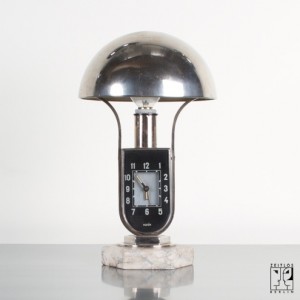
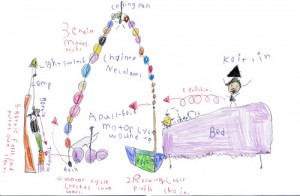
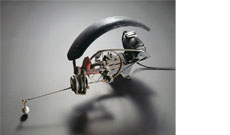
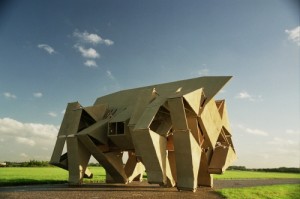
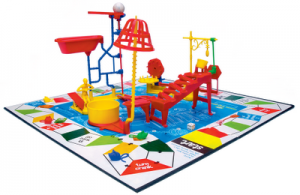
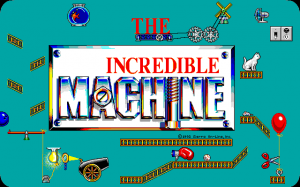
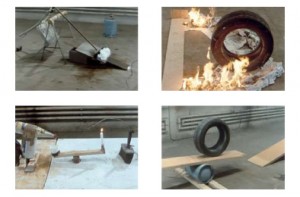
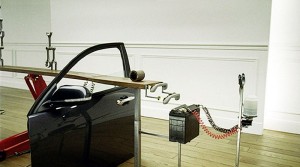
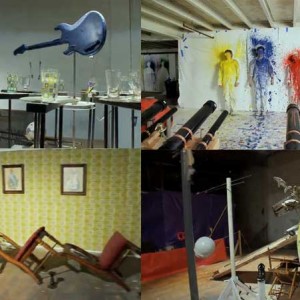
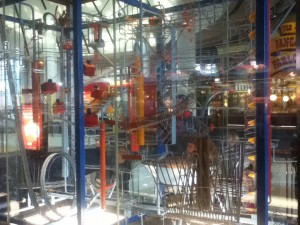
Thanks for finally writing about >Design Studies – Rube Goldberg: Semester
2, 2012 <Loved it!
Usually I do not read article on blogs, but I wish to say that this write-up very compelled me
to check out and do it! Your writing taste has been amazed me.
Thank you, very great post.
I see you don’t monetize your page, don’t waste your traffic, you can earn extra
bucks every month because you’ve got high quality content.
If you want to know how to make extra money, search for: Boorfe’s tips best
adsense alternative
I have noticed you don’t monetize your blog, don’t waste your traffic, you can earn additional cash every month.
You can use the best adsense alternative for any type of
website (they approve all websites), for more details simply search in gooogle:
boorfe’s tips monetize your website
Leave reply
© Copyright 2011 Design About Something - All rights reserved.
Subscribe